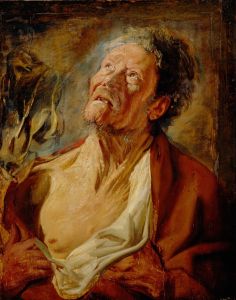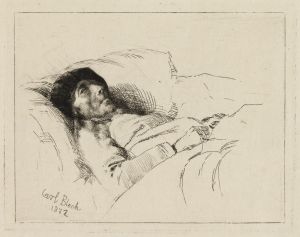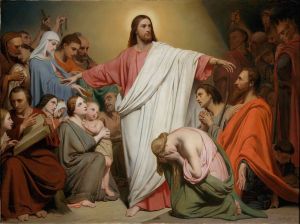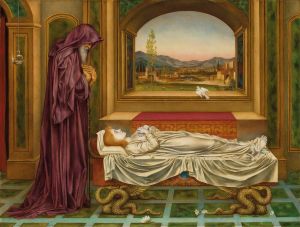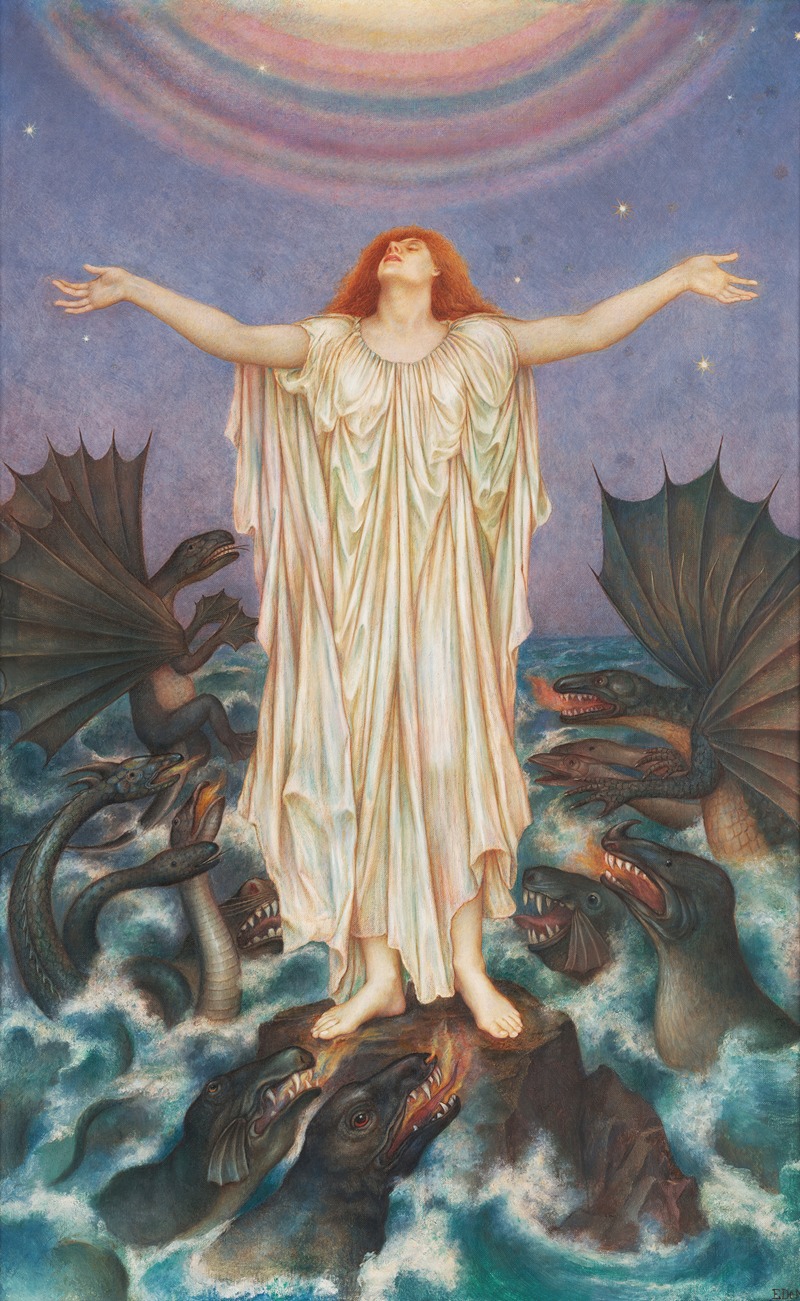
S.O.S.
A hand-painted replica of Evelyn De Morgan’s masterpiece S.O.S., meticulously crafted by professional artists to capture the true essence of the original. Each piece is created with museum-quality canvas and rare mineral pigments, carefully painted by experienced artists with delicate brushstrokes and rich, layered colors to perfectly recreate the texture of the original artwork. Unlike machine-printed reproductions, this hand-painted version brings the painting to life, infused with the artist’s emotions and skill in every stroke. Whether for personal collection or home decoration, it instantly elevates the artistic atmosphere of any space.
Evelyn De Morgan was a prominent English painter associated with the Pre-Raphaelite movement, known for her symbolic and allegorical works. One of her notable paintings is "S.O.S.," created in 1914. This artwork is a compelling representation of De Morgan's response to the outbreak of World War I, reflecting her pacifist beliefs and her concern for the human cost of war.
"S.O.S." is an oil painting that vividly captures the chaos and despair brought about by the war. The title itself, "S.O.S.," is a distress signal, underscoring the urgency and desperation of the situation depicted. In the painting, De Morgan employs her characteristic use of rich colors and intricate details to convey a powerful message.
The composition of "S.O.S." features a tumultuous sea, symbolizing the turmoil and destruction of war. Amidst the waves, figures are depicted struggling for survival, representing the soldiers and civilians caught in the conflict. De Morgan's use of allegory is evident in the way she portrays these figures, emphasizing the universal suffering caused by war rather than focusing on specific nationalities or events.
Central to the painting is a female figure, often interpreted as a personification of hope or salvation. She is depicted reaching out to those in distress, offering a sense of compassion and solace amidst the chaos. This figure embodies De Morgan's belief in the possibility of redemption and peace, even in the darkest times.
Evelyn De Morgan's work is characterized by her commitment to social and political themes, and "S.O.S." is no exception. The painting reflects her deep concern for the impact of war on humanity and her desire to promote peace. De Morgan was known for her involvement in various social causes, including women's suffrage and pacifism, and her art often served as a medium for expressing her ideals.
"S.O.S." is part of De Morgan's broader body of work that explores themes of spirituality, morality, and the human condition. Her paintings are noted for their meticulous attention to detail, vibrant color palette, and symbolic content. De Morgan's style is influenced by the Pre-Raphaelite Brotherhood, a group of artists who sought to return to the detail, intense colors, and complex compositions of pre-Renaissance art.
The painting is housed in the De Morgan Collection, which is dedicated to preserving and exhibiting the works of Evelyn De Morgan and her husband, the ceramicist William De Morgan. The collection provides insight into the artistic and personal partnership between the two, as well as their shared commitment to social and political issues.
In summary, "S.O.S." by Evelyn De Morgan is a poignant and powerful work that captures the artist's response to the horrors of World War I. Through her use of allegory and symbolism, De Morgan conveys a message of hope and compassion amidst the devastation of war, reflecting her pacifist beliefs and her dedication to promoting peace.





